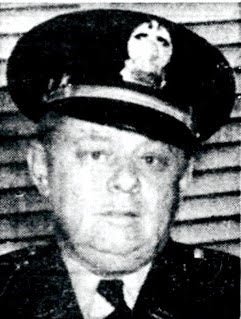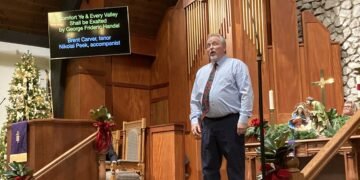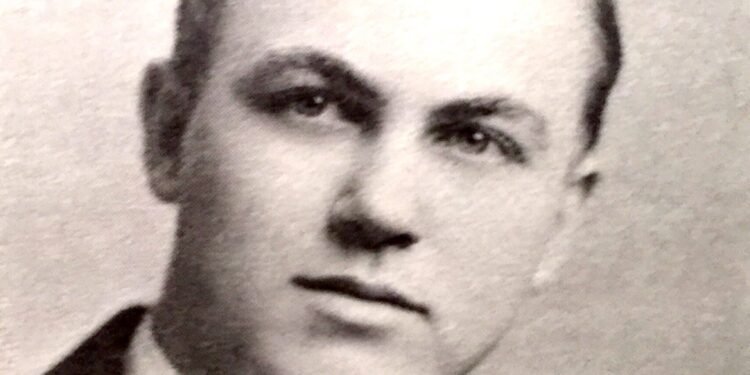(This article first appeared in the August print edition of the Hendersonian.)
“Few happenings in the history of Henderson caused more consternation than the dope-ring story,” Francele Armstrong wrote in 1963 – 11 years after the story broke.
The original controversy was a three-day event that broke July 17, 1952, with banner headlines in all-capital letters. The first one read, “DOPE BEING SOLD TO HENDERSON CHILDREN! DROP STATION FOR HUGE RING HERE!” Similar headlines in The Gleaner followed the next two days.
Readers of The Gleaner were alarmed to learn illegal drugs were being sold to their children at three different locations, and that Henderson was a transfer point for the distribution of up to $3 million worth marijuana, heroin and other drugs.
The Gleaner’s managing editor, Jack Hudgions, wrote the story, which he attributed to “unimpeachable sources which must remain anonymous.” Hudgions, of course, is best remembered these days for his research of local history, the manuscripts of which are located at the Henderson County Public Library.
Police Chief L.D. Monroe Edwards had been Hudgions’ source, according to the July 18 Gleaner. The Kentucky State Police had sent Edwards to town in 1948 to help clean up the gambling problem that had degenerated into several bombings, according to the Louisville Courier-Journal of Feb. 12, 1950. (Edwards seemed to have a knack for being at the center of controversies.)
“Edwards soon learned, after delving into the dynamitings, that they resulted from the little gamblers and slot machine operators refusing to be pushed around by the ‘big boys.’ The nickel-and-dime boys wanted their share of Henderson’s gambling take.”
Despite his detractors, Edwards left a big imprint on the Henderson Police Department, reorganizing it into the modern law enforcement agency we have today.

“Adults are also buying the dope in Henderson,” Hudgions wrote initially. “Marijuana cigarettes are what most of the children are buying, but children are also using (hypodermic) shots that would total three numbers. Some children have been secretly viewed. Their arms look like screens because they have had so many shots.”
Most of the alleged drug use was being done by Camp Breckinridge soldiers and high school students, Hudgions wrote, but “some grade school students are buying the habit-forming weed too.”
The day Hudgions’ story hit the street, County Judge Fred Vogel and County Attorney James E. Hunt convened a court of inquiry to delve into the facts of Hudgions’ story. The “parade of witnesses,” which included representatives of local law enforcement, the school systems, the health department, the welfare department, the YMCA, and local doctors, failed to corroborate what Hudgions had reported.
The first day of the hearing, the closest anyone came to confirming a drug scandal was the story of a 16-year-old girl, who said that a few months earlier a male acquaintance of hers named Ralph Dillard had talked her into accepting an injection of some unknown drug into her hip.
Another teenager testified he had seen Dillard and another man named Sammy Nunn consume a soft drink into which they had poured some white powder. “They became very elated and laughed a lot.”
The police chief did not testify during the first day of the hearing because he was out of town.
But the second day, when finally asked under oath whether he had told Hudgions about local drug traffic, he firmly replied, “I never gave information like that to anyone…. It looks like I have been selected to be the goat. I don’t know why.”
When asked if he knew about a $3 million drug trade locally, Edwards replied, “No, sir. If I did, I wouldn’t sleep until I had someone behind bars.”
After lengthy testimony by people denying knowledge of any local drug trade, two witnesses telling a different story came forward at the end of the second day. The first was Trooper Charles Klasen of the Kentucky State Police.
He said he had been looking into local drug traffic for more than three months, but to no avail. “I believe there is, but I can’t prove it,” he said. “If there is a traffic, I’ll find out about it.
“I’ve got a little girl almost ready to go to school,” Klasen said, right before leaving the witness stand.
The other witness lending credence to Hudgions’ story was Magistrate (and later county judge) Eugene Chaney. An earlier witness had said Chaney “felt the newspaper story had destroyed three years’ work of checking up on dope operations here.”
Asked if he had made such a statement, Chaney replied, “I probably did, probably to several people. There was a state policeman working on this. With this (story) coming, it has probably destroyed any leads.”
The second day also saw three other reporters from The Gleaner corroborating that Edwards had also told them of local drug trafficking. They included Charlie Davis, Arthur Kasey Sr., and Hugh Edward Sandefur, who had to be brought in by ambulance because of his disability.
All three said Edwards had attempted to get them interested in the story. Kasey testified that the previous winter FBI personnel were in town to monitor an alleged transfer point. After the story broke, Kasey said Edwards told him, “I didn’t tell anybody anything. I don’t want to get mixed up in this.”
Sandefur said from information he had gathered, Hudgions’ story could just as well “have carried my byline.” As many as six arrests were coming, Sandefur said, and a local hotel was under observation.
Davis said he had heard numerous rumors the previous winter, but a change in his beat assignment meant he wasn’t at liberty to pursue them.
Gleaner executive editor Francele Armstrong testified right before the hearing ended the second day. She said Hudgions may have been misled, but he had relied on the veracity of the police chief.
“It is a case of Chief L.D. Edwards against four of our reporters,” she said. “Ordinarily, we accept the word of an official law enforcement officer….”
The hearing resulted in no firm conclusions. Edwards took a six-month unpaid leave of absence a few weeks after the hearing ended. He never returned. Aubrey Williams was named police chief Aug. 31, 1953.
But Edwards’ attempt to reclaim his old job in 1963 prompted Armstrong to once again dredge up the controversy – because she wanted no part of Edwards returning here.
Her column of March 29, 1963, reported she had received a letter from Edwards in which “he calmly announces he is ready to resume” his position….
“To those of us who suffered through the ‘dope scandal’ during Edwards administration (the letter) seems in keeping with the character of this fantastic person.”
She detailed how Hudgions, who died four years earlier, had turned in his story in 1952, which prompted a meeting of The Gleaner’s owner and editorial board.
“Jack told us about going to these drop points with the FBI man and told of seeing high school students buy packages of marijuana cigarettes and come out of the stores smoking them.” The board OK’d publication of the story.
But after the first day of the hearing, she wrote, Hudgions came into the office, put his head on his desk, and wept bitterly. “I have ruined the Gleaner and Journal,” he sobbed. He admitted there had never been an FBI agent here, but said he feared The Gleaner would hesitate to run the story solely on the say-so of Edwards. Armstrong said that absolutely was the case.
But Hudgions maintained he had gone to various places with Edwards to see drug transactions.
She ended her column, “We hope the city does not have to take Mr. Edwards back as police chief. We have had enough trouble in this area already.” The same day Aubrey Williams was again named police chief.
A week later, on April 5, 1963, The Gleaner published her follow-up column after she had received a strongly worded letter from Hudgions’ widow, the former Elizabeth Posey, who alleged Armstrong’s earlier column had smeared her dead husband’s name.
“Jack was a favorite of our family and nothing could have been farther from my intention than to cast a shadow on his memory,” Armstrong replied. She then published Mrs. Hudgions’ letter in full – demonstrating her guts.
One point Elizabeth Hudgions made was particularly interesting: “A short time after the episode in question, a national dope ring was caught in a southern city and the nationally publicized story mentioned the fact that the ring had previously operated a ‘drop station’ in a small midwestern town, until a local news story caused the ring to transfer its operations.”
Elizabeth Hudgions doubted her husband had told Armstrong he had “ruined the Gleaner … since you managed to do that very well without his assistance.”
And she “emphatically” denied Jack Hudgions had ever retracted his statements about the FBI. “Jack firmly believed that the ‘man in the raincoat’ WAS an agent of the FBI; that there was a dope ring” but that the FBI refused to confirm that for fear of fouling its investigation. “Chief Edwards, for reasons of his own, chose to break the story prematurely.”
Armstrong ended her Aug. 5 column with these words: “Thanks, Lib, for your enlightening letter. I am sure that many people in Henderson will be interested to learn that subsequent developments demonstrated the truth of the ‘dope ring’ story.
“It had always puzzled me why the court of inquiry here did not investigate rather than repudiate the story.”





















